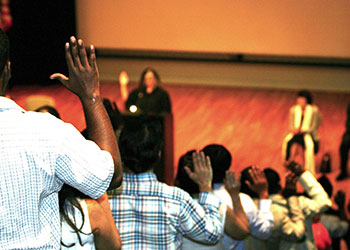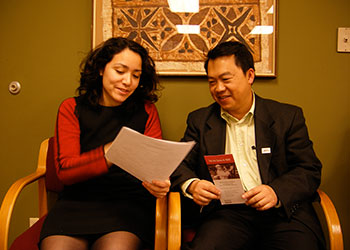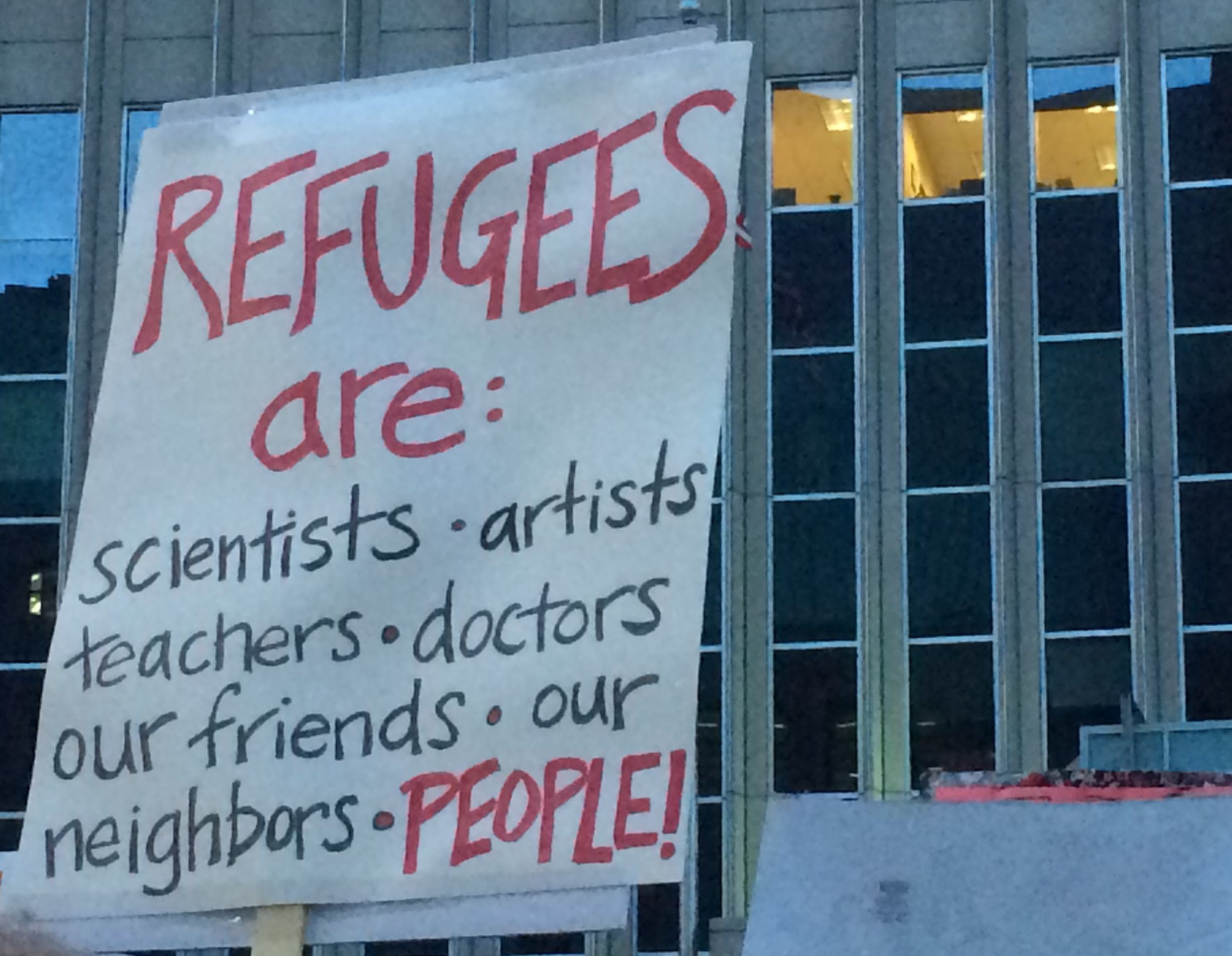Archives
Somali 92: Courage Amid Chaos
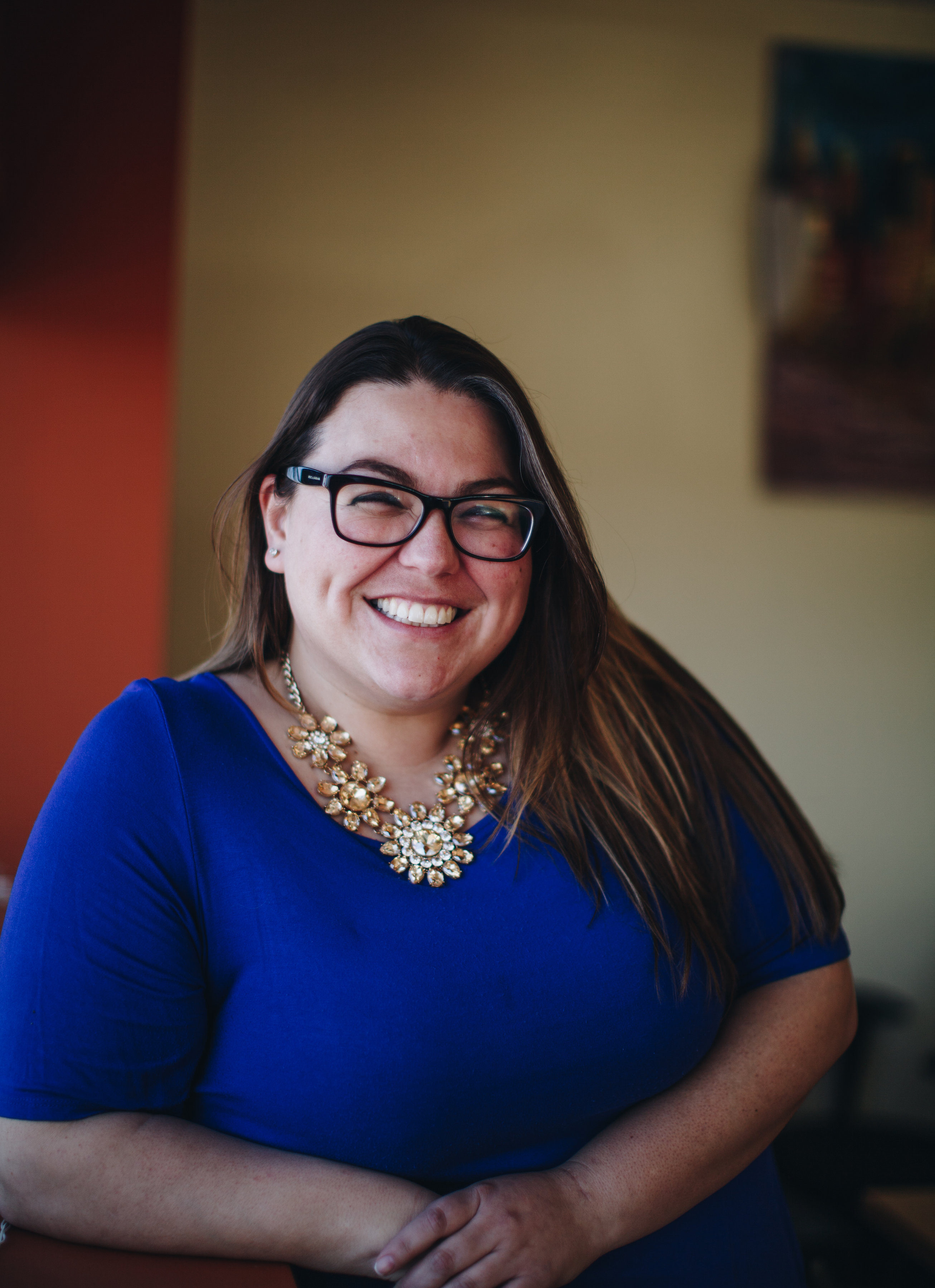
Mirella Ceja-Orozco was on the phone with her client about 11 p.m. on December 5, 2017. By 2 or 3 a.m., he was shackled to a seat in a plane heading for Somalia, a country he had not seen since fleeing sixteen years earlier, as a teenager.
Ceja-Orozco had represented this client—we’ll call him R—for two years. “We probably spoke five days a week, including weekends, while he was detained,” she recalls. “That’s how invested he and I were as client and attorney.”
The deportation flight, with 92 Somali immigrants on board, landed in Senegal, not in Somalia, sat on the ground for a while, and then headed back to Florida, for reasons that are still not clear.
When the plane landed in Florida, R had a broken finger, bruising, and a possible sub-orbital fracture. He had been beaten on the airplane, he told her, though not as badly as some of the others. He saw one man on the plane so severely beaten that he passed out. During their 46 hours on the plane, detainees were denied food, water, medication, even access to bathrooms. R recalls receiving one 16 ounce bottle of water and some slices of bread when the plane took off, but nothing else during 46 hours on the plane.
The flight became international news, and the names and photos of some of the Somali 92 were published in the media. As R spoke out about ICE agents’ abuse of immigrants shackled on the plane, his photo was published in a newspaper in Somalia.
When R called Ceja-Orozco and told her what happened to him and what he witnessed on the plane, she called Ben Caspar at the University of Minnesota Law School, where she taught as an adjunct professor. Her call and others sparked a class action lawsuit that would eventually involve multiple attorneys and legal organizations in multiple states, in a case that became known as the Somali 92. The class action asked that individuals on the flight be allowed to reopen their cases, based on changed circumstances: the publicity surrounding the flight had focused attention on them and their lives would be in danger if they were sent back to Somalia.
R and the rest of the Somali 92 were forced onto that deportation flight as a direct result of Trump administration deportation policies. When Trump became president, he made deportation a policy priority. He ordered that any immigrant eligible for deportation must be deported. The administration began pressuring the governments of Somalia and other countries that did not accept deportees. Immigrations and Customs Enforcement (ICE) began jailing immigrants when they showed up for regular check-ins, and holding them in jail indefinitely. While some of the Somali 92 on that flight had criminal records, many were targeted simply because of prior. orders of removal because of lost asylum claims, changes in status, or similar circumstances.
R had an order of removal for about ten years. He was allowed to continue working and supporting his family as long as he checked in with the U.S. immigration office every six months. He was taken into custody when he went to a regular six-month check-in.
For years before 2017, the United States did not deport anyone to Somalia because the country had no government and no way to accept deportees back into the chaos and violence of civil war. Because he could not be deported when he was detained at his check-in, R was held in Irwin County Jail in Ocilla, Georgia and then transferred to LaSalle Detention Center in Louisiana. After the flight returned from Senegal, he was held briefly in the Krome Detention Center in Florida.
Then he was transferred from Krome Detention Center to Glades Detention Center in Florida, and immigration officials told Ceja-Orozco that his case would be transferred to a Florida immigration court. Instead, in the middle of the night, he was transferred back to Irwin Detention Center in Georgia. When Ceja-Orozco called Glades Detention Center the next day, she was told that no one knew where he was. Maybe, they said, he had been deported. “There were a few hours of panic,” she recalls, “and then he was in Georgia.”
Ceja-Orozco flew to Georgia to visit R. The Irwin Detention Center is located in Ocilla, more than a three-hour drive from Atlanta and the home town of Jefferson Davis. At the federal courthouse in Atlanta, an ICE agent warned her: “Make sure you leave before dark, because you’re Latina. You don’t look it, but just make sure you leave before dark. Try to avoid pulling over until you get closer to the city.”
Ceja-Orozco drove through forests and past what once were plantations. ” I couldn’t help but visualize scenes of people running and hiding and trying to escape slavery,” she said. “It was such an eerie feeling and vibe—coupled with my imagination and what the ICE agent had told me at the courthouse. I thought: my client is black, he’s Muslim, and he’s here.”
She visited R three times, and experienced no hostility or rudeness. But, she says, “I always left before dark.”
In June 2018, 14 months after he was first detained, a court granted bond to R, allowing him to leave immigration detention while his case makes its way through the system. He and his family now live in Minnesota, and Ceja-Orozco continues to represent him.
“I remember the day that he got bond,” she says. “I cried. I’ve never cried in open court, and I cried—tears were coming down my face. There was such a relief. I felt that I didn’t care if I never practice again—I got him bond.”
When Ceja-Orozco began representing R, she was an attorney in private practice. By the time that the Somali 92 class action was filed, she was working pro bono, as the cost of representation mounted beyond anything her client could pay. When she came to work at the Immigrant Law Center of Minnesota, R became a client of ILCM and she continued to represent him.
“I never would have been able to do it all by myself,” Ceja-Orozco says. “Thankfully, ILCM allowed me to keep it as a pro bono case—there’s no way my client and his wife could have continued the fight if they had to pay for it. I was lucky and my client was lucky that we had support from the University of Minnesota Law School, and the entire litigation team that gathered to support and represent the Somali 92.
“That for me also epitomizes how awesome the immigration bar is, because they jumped in, not fully knowing how deep it would go or how crazy it would get, but saying. ‘How can I help you?’ and actually meaning it, not just saying it as a formality.”
After months of litigation, the class action was finally resolved in 2019. Immigrants who had been on that flight were either allowed relief by reopening their cases or opted out or were denied relief.
“It’s one of the cases that has defined my career,” Ceja-Orozco says. “The convolutedness, the overwhelmngness of it all epitomized what the Trump administration has done to the profession. I started practicing immigration law under the Obama administration, with DACA and welcoming people and having them become part of the salad bowl. Now it’s ‘No. You are different.’ instead of welcome. This case defines that change for me as a practitioner. I never had gray hair until this case.”
Ceja-Orozco and the rest of the Somali 92 team have been honored with the The Advocates for Human Rights award, which will be presented at the Advocates’ annual awards dinner on June 20, and with the 2019 Arthur C. Helton Memorial Human Rights Award at the American Immigration Lawyers Association (AILA) Annual Conference in Orlando, Florida on the same day.
New Deportation Threat: ‘Reprehensible and Dishonest’
June 18, 2019 – Last night’s Twitter threat to deport “millions” of long-time U.S. residents goes hand-in-hand with the official kick-off of Trump’s re-election campaign. This White House bluster aims to stir up the president’s supporters, while sowing terror and confusion in the immigrant community.
Nearly two-thirds of unauthorized immigrant adults have been in the United States for more than 10 years. They work and contribute to the United States economy. They have homes and families here. Many are married to U.S. citizens and legal residents and have U.S. citizen children. Our antiquated and punitive immigration laws give them no way to legalize their status. Reforming those laws, not separating and deporting families, is where our government should focus.
“Last night’s presidential Tweet represents a reprehensible and continuing policy of terrorizing and intimidating immigrant communities while appealing to the worst xenophobia and racism of an unrepresentative but vocal minority in the United States,” said Lenore Millibergity, interim executive director of the Immigrant Law Center of Minnesota (ILCM). “This threat is not only disgusting, but also dishonest: deporting ‘millions’ of unauthorized immigrants is a legal and logistical impossibility.”
The highest numbers of immigrants deported in a single year came in 2012-2014, when more than 400,000 immigrants were deported each year. Currently, immigration detention centers are full and immigration courts have years-long backlogs. There is no way that the president’s threat can be carried out. The government does not have the capacity to do so.
“We have no doubt that the administration will try to implement some high-profile arrests and speedy deportations in the next weeks,” said Millibergity. “Immigrants, including millions of families with mixed immigration status, need to be aware of their due process rights. Legal services offices like ours will respond in any way that we can, although our capacity is already stretched to the maximum. We call on elected officials at local, state, and national levels to denounce this continuing attack on the immigrant community.”
Trump vows mass immigration arrests, removals of ‘millions of illegal aliens’ starting next week
From Target to Defender: Celeste’s Refugee Story
Celeste* cannot remember exactly how old she was, maybe six or seven. She does remember the attack, on the way home from the clinic where her mother and father worked.
“We were driving home from clinic and somebody waved down the car, asking for help,” Celeste recalls. “As soon as my father stopped, one guy was standing there, and said, ‘You were in an accident on Monday and the person in the accident died.’ This was Wednesday.”
It wasn’t true. Her father began to argue. The man pulled out his gun.
“Two other men came out of the bushes with their guns,” she remembers. “I was in the back seat. My mom was in the front passenger seat. My dad was in the driver seat. They told him to go in the back seat with me. One man got in beside him and the other beside me and they were pointing their guns at us. The other man took the wheel of the car.
“I passed out. In times of great stress and fear, sometimes children do.
“I was awakened by a big banging sound. The person who was driving may have been nervous or something, because they rear-ended a truck with a bunch of soldiers in it. The soldiers started running out to see what was going on. These men got scared and ran away because they were obviously in the middle of a kidnapping. They were going to kill us all, but we got into a car accident, so it didn’t happen.”
This attack happened in Uganda, the country of refuge where Celeste’s family had fled from their native Rwanda. As Tutsis in Rwanda, Celeste’s family had a history of persecution. The 1959 Revolution brought independence, and also Hutu rule that killed tens of thousands of Tutsis and drove more than 150,000 of the country. Her parents’ families stayed, but experienced discrimination. Tutsis could not get good jobs, could be kept out of school, or would get bad grades if they insisted on remaining in schools. In 1973, Tutsis were purged from universities, and targeted in a wave of killings. Her parents, then in middle or high school, had been forced out of their schools.
Eventually, they returned to school, becoming medical professionals. Her father, a doctor, “had a strong sense of speaking out” about injustice. That was not safe, and threats were made, though Celeste was too young to know exactly what happened. “From my five-year-old mind, I just remember that we got our things and put them in the car and left the house,” Celeste says. They drove for a full day, mother and father, Celeste, and two younger siblings.
Danger followed them into the Ugandan refugee camp. Her parents managed to take the family out of the camp and open a clinic in Kampala. “The clinic was for everybody,” she recalls, “but a lot of other Rwandan refugees would go there, because of language and a lower cost for services.”
Then Kampala became too dangerous to stay. The kidnapping was at least the second assassination attempt, and others followed. Her father applied to the U.N. High Commissioner for Refugees for resettlement out of the. country. Eventually the family, now including a baby brother born in Uganda, got good news: they would be resettled in Canada.
“When we got on the plane, I didn’t know about Canada,” Celeste says. “I remember asking my parents, what is this white stuff on the ground. I had never seen snow. I didn’t know what it was. There were all these fires inside the house—fireplaces—I didn’t know what they were either.”
Her mother was re-licensed as a nurse, and the family became Canadian citizens. Her father, a doctor, faced a longer re-licensing process. When Celeste was thirteen, they moved to Texas, with her mother taking a job as a nurse there. That was right after the Rwandan genocide in 1994, in which about a million Tutsi people were killed.
Her father lost almost all his family members, with only one of his four siblings surviving. Only two of her mother’s six siblings survived, and one of those two later died because of circumstances related to the genocide.
“Seeing things unfold on the news, you are completely powerless,” Celeste says. “My parents were on the phone all the time. They would hear that somebody had died or that somebody had survived and they were in such and such a place. I think they sent relatives money to help them. We were largely powerless though; we watched but could do very little. A lot of people in our family didn’t make it through that.
“Had I not been resettled, I would have died like a lot of my relatives did.”
Celeste visited Rwanda when she was 27. She met the few members of her extended family who had survived.
“That was hard because there is very little to relate to when you have grown up in such different circumstances,” she says. “My cousins lived through the genocide and rebuilding of country. The standard of living there is a lot different than the standard here. It highlights how unfair things are and how luck plays into a lot of things. ”
Celeste went to college and later to law school. She became a U.S. citizen, “because I wanted to vote.” Her family is scattered across the country, all U.S. citizens now, all working and contributing their many talents to the country.
After law school, Celeste worked on refugee resettlement for the United Nations and other agencies. That work kept her abroad and moving: Kenya, Cameroon, Senegal, Zimbabwe.
Celeste’s work with refugees and stateless people was intense, sparking nightmares and insomnia as she imagined herself in her clients’ situations. She recalls “a terrible case where a woman had been attacked by her husband. She came to the office with bruises on her neck that took the shape of a hand. She came to office at 4 p.m., so late in the day that I couldn’t find a safe place for her to stay. She had to go back to her apartment where she had been raped and almost choked to death the night before. During that entire night, my eyes were wide open, and I stayed awake.”
Eventually, with her clients’ stories evoking her own childhood trauma, she needed a change. Returning to the United States, she settled in Minnesota and found work that did not immerse her in trauma every day. Though she is one step removed from the most searing contact with that trauma, she has found ways to continue working for refugees and immigrants. A passion for justice, formed and informed by her life experience, continues to inspire her work.
* We have changed Celeste’s name in this story. As a matter of policy, we usually change the names of immigrants when telling their stories. While the stories are real, and while the individuals have agreed to let us use their stories, we choose to protect their privacy by not using their real names.
Comprehensive Immigration Reform
(For a printable version of this Fact Sheet, click here.)
What is Comprehensive Immigration Reform?
Our current immigration system no longer serves the interests of the nation. Case processing times have doubled in the past two years and immigration court backlogs have reached nearly a million cases. Temporary and permanent immigrant workers, documented and undocumented, face impossible bureaucratic hurdles and are vulnerable to exploitation. Millions of people who have worked and built homes and families in the United States for decades live in daily fear of deportation. We need a complete overhaul of the immigration system: Comprehensive Immigration reform.
Our immigration system must be fixed in a way that reflects our values and faces the challenges of the 21st century. By Comprehensive Immigration Reform (CIR), we mean a package of reforms that includes:
- Creating a pathway to citizenship for undocumented immigrants;
- Keeping families together and reunifying families separated by the immigration system;
- Implementing a system of temporary and permanent work visas that prioritizes protection of immigrant workers, while meeting the needs of U.S. employers and economy;
- Protecting and welcoming refugees and asylum seekers;
- Defending due process for all people.
Pathway to Citizenship: DREAMers and people with Temporary Protected Status (TPS) and Deferred Enforced Departure (DED) must have a pathway to citizenship. There must also be a pathway for undocumented immigrants of all ages who have lived here for years. We cannot afford to lose these valuable members of our communities.
Families: The backlog for family-based visas has kept spouses, parents and children, and siblings apart for years. CIR must provide relief for the people currently on waiting lists and a better system for family reunification in the future. Family-based immigration increases human capital and provides an economic benefit to the country. Family visa categories must be updated to explicitly include same-sex couples and their family members.
Employment: Immigrant workers include STEM workers with advanced academic degrees, nurses and health care workers, agricultural workers, construction workers, and workers contributing to the economy in just about every imaginable category. Some immigrant workers want to come here for seasonal work and return to their home countries, and some want to remain here permanently and become citizens. For all of these workers and for their employers, CIR means processes that protect workers’ rights and that allow movement of workers to fill the needs of the U.S. economy.
Refugees and Asylum Seekers: CIR must clarify that “particular social group” in the asylum context includes women fleeing domestic violence, LGBTQI people, and those fleeing gang activity when the home country is unable or unwilling to protect them from harm
Due Process: Due process includes adjustment of status inside the United States rather than requiring exit and return, and an increase in personnel at embassies and within USCIS to facilitate prompt processing of visas, petitions for adjustment of status, naturalization, and all other cases without the current lengthy administrative delays.
Due process means an independent immigration court system.
Due process also means an end to the presumption of detention for immigrants awaiting a court hearing, and minimization of detention in immigration cases. Data shows that immigrants who are released with a court date overwhelmingly do show up for that court hearing.
At the border, due process requires prompt and humane processing of immigrants apprehended by CBP, including provision of food, shelter, and medical care, and access to legal representation.
Overall, the changes in Comprehensive Immigration Reform embody an attitude toward immigrants that is compassionate and welcoming, rather than punitive and hostile.
What’s Happening at the Border is the Result of a Regional Crisis
There really is something unprecedented — and deadly — happening at the US-Mexico border right now. But the threat is to migrants themselves.
Proposed HUD Rule Targets Immigrant Families

As millions of U.S. households struggle to find affordable housing, a newly-proposed HUD regulation would evict more than 100,000 people from public housing. The proposed regulation targets immigrants and would evict families in which even one family member is ineligible for housing assistance.
Currently, these mixed-status families can live together in subsidized housing. Their housing subsidy is decreased so that the ineligible person does not receive assistance. “Ineligible” does not mean “undocumented.” Immigrants can have legal status and still not be eligible for public housing and Section 8 programs. The new regulation, however, would bar all members of mixed-status families from public housing and Section 8 programs.
YOU CAN MAKE A DIFFERENCE: Go to www.Keep-Families-Together.org and submit your comment now! Or submit your own comments directly on regulations.gov.
Many Minnesota children and elders in mixed-status families rely on subsidized housing because of the extremely high costs and low availability of affordable housing. In our daily work at the Immigration Law Center of Minnesota, we see the struggles of immigrant families to find affordable housing, especially in the Twin Cities metropolitan area.
The rental vacancy rate in the Twin Cities metro area is consistently below 5 percent. The housing vacancy rate in St. Paul was 3.3 percent in 2017, and Minneapolis was close to that number with a 3.5 percent vacancy rate.
Affordability is an even bigger problem, in the metro area and throughout the state. The average monthly rental in the seven-county metropolitan area exceeds $1,000 and rises every year. In the city of Minneapolis, the average rent rose to $1,279 in 2017, up 17 percent from 2010. In 2017, the average waitlist time for subsidized housing in Minnesota was 22 months.
This proposed rule does not address the undeniable crisis of affordable housing. Instead, it is part of the Trump administration’s war on immigrants. Blaming immigrants will not solve the nation’s affordable housing problem.
HUD’s own data shows that the proposed rule will evict 108,000 people, with three-quarters of these people being family members who are themselves eligible for subsidized housing. Some 55,000 of the people who would be thrown out of their homes by this rule are children who are U.S. citizens or legal permanent residents. The rule would force mixed status families to either break up to allow eligible family members to continue receiving assistance or forgo housing assistance so that the families can stay together.
In Minnesota, almost 140,000 people live in mixed-status families with at least one unauthorized family member. That includes more than 60,000 children living with at least one unauthorized family member. Nationally, about six million U.S. citizen children live in mixed-status families with at least one unauthorized family member.
While it is clear that the proposed rule is a direct attack on immigrants and citizens in mixed-status households, these families are not the only group that will be harmed if the rule is finalized. In addition to attacking mixed status families, the proposed rule creates red tape that threatens housing security for 9.5 million U.S. citizens currently receiving HUD assistance and all future U.S. citizens seeking these benefits.
Currently, to establish eligibility for housing assistance, U.S. citizens need to provide a declaration signed under penalty of perjury of their citizenship or nationality status. The proposed rule would require that these individuals also provide documentary proof, such as a birth certificate, which can be extremely difficult to obtain for certain segments of the population. One survey from 2006 showed that as many as seven percent of citizens did not have citizen documentation readily available. Obtaining such documentation can be particularly difficult for U.S. citizens over the age of 50, citizens of color, citizens with disabilities, and citizens with low incomes.
In addition to the difficulties faced by individuals, this requirement will create an additional layer of bureaucratic requirements, and divert funding that could otherwise be used simply for providing housing.
Even immigrant and mixed-status families in which every member is entitled to the benefits of subsidized housing or public housing would be affected by this rule. Many would leave public housing or fail to claim benefits because of fear that they would be penalized for using housing assistance. This has already happened in the area of public benefits, where a different proposed regulation would penalize some immigrants for using some programs. The Urban Institute found that one in seven adults in immigrant families reported avoiding public benefit programs in 2018—despite the fact that the proposed public benefits regulation has not yet taken effect and might not apply to them even if it is promulgated.
Immigrants are a critical factor in keeping the U.S. economy healthy and growing. Currently, more than 27 million foreign-born workers in the U.S. labor market comprise about 17% of the total U.S. workforce. Immigrants are more concentrated in labor markets that literally feed and house America—immigrants make up 28% of construction trade workers and upwards of 70% of agricultural workers.
Immigrants are an essential part of our health care system, comprising nearly one in five of all health care workers and nearly one in four health care workers in the long-term care sector. Nearly one worker in three at home health agencies is an immigrant, many earning very low incomes while providing essential care. As the elderly population in the United States continues to grow, we will need more health care workers to provide needed care. In all sectors, immigrant workers replace retiring baby boomers and continue to support the Social Security system and Minnesota tax revenues.
The new HUD rule was proposed on May 10, and a 60-day public comment period will end on July 9.
What you can do—make your voice heard!
- The National Housing Law Project (NHLP) and National Low Income Housing Coalition (NLIHC) are leading the effort to oppose this harmful and cruel proposal and have developed advocacy tools for you to use to join us in opposition. Together, NHLP and NLIHC launched a new website for individuals to submit their comments. Go to www.Keep-Families-Together.org and submit your comment now!
- To learn more, check out their fact sheets, talking points, and social media toolkits.
- You can also submit your own comments directly on regulations.gov.
American Dream and Promise Move Forward
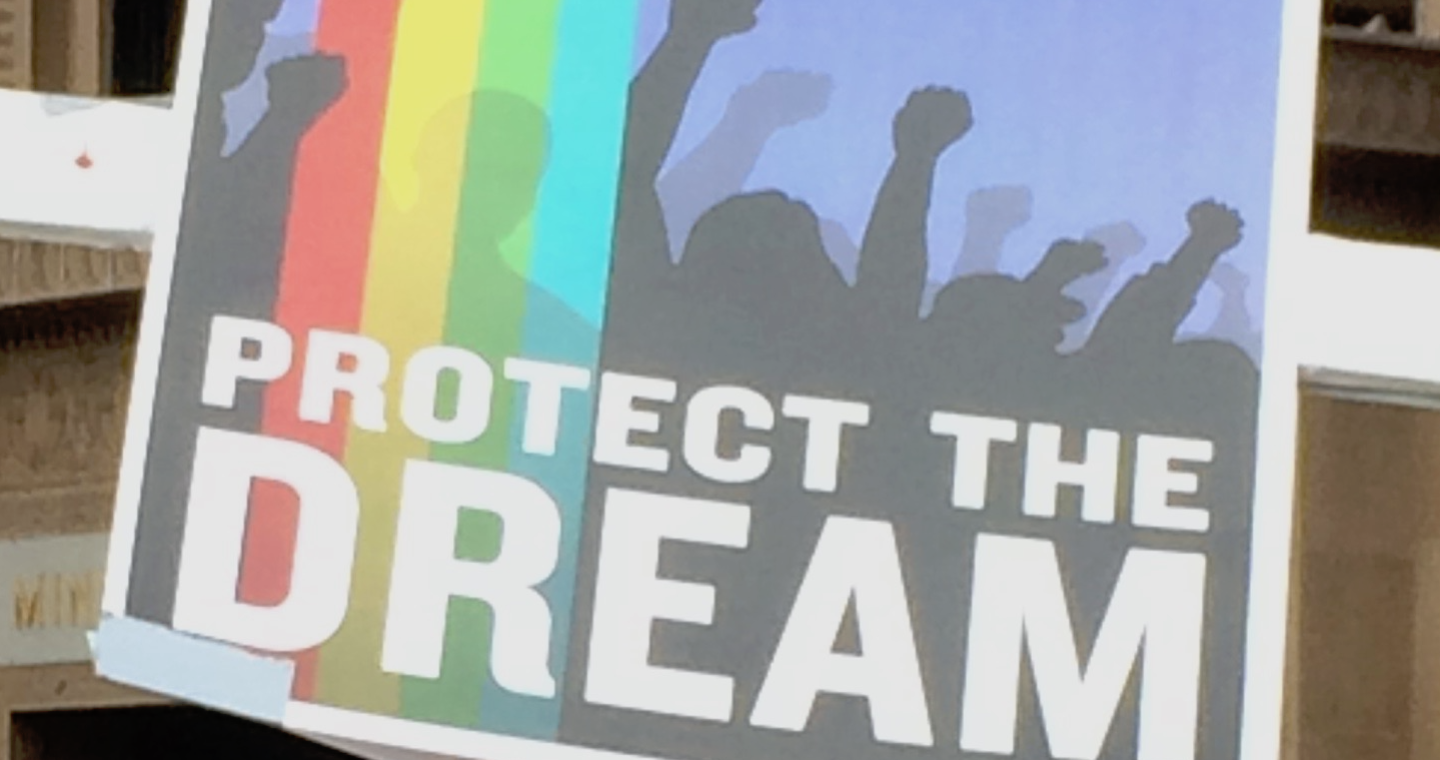 Press Release, June 4, 2019—Legislation offering safety and a path to citizenship to 2.7 million immigrants passed the House on Tuesday. Nearly 20,000 Minnesotans would gain protection and a path to citizenship if this bill becomes law.
Press Release, June 4, 2019—Legislation offering safety and a path to citizenship to 2.7 million immigrants passed the House on Tuesday. Nearly 20,000 Minnesotans would gain protection and a path to citizenship if this bill becomes law.
The U.S. House of Representatives passed HF6, the American Dream and Promise Act of 2019, with every Democrat and seven Republicans constituting a 237-187 majority. The legislation would provide a safe path to citizenship for Dreamers—migrants who were brought here as children and grew up in the United States—as well as for migrants with Temporary Protected Status (TPS) and Liberian migrants now temporarily protected by Deferred Enforced Departure (DED).
The legislation now goes to the Senate, where Republicans plan to block it from consideration, despite overwhelming popular support for the legislation. Polls show as many as 80 percent of people in the United States support a path to citizenship for Dreamers.
“House passage of the American Dream and Promise Act is an important step forward for 2.7 million immigrants whose work and courage and imagination already contribute massively to the good of the entire country,” said Lenore Millibergity, interim executive director of the Immigrant Law Center of Minnesota. “We all benefit from their presence here. Now it is time the Senate to heed the voices of the U.S. people and pass this important legislation.”
